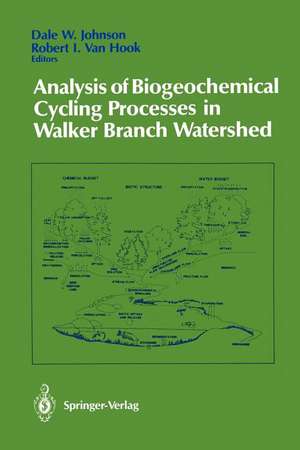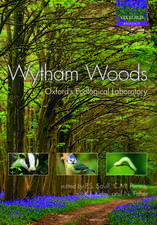Analysis of Biogeochemical Cycling Processes in Walker Branch Watershed: Springer Advanced Texts in Life Sciences
Editat de Dale W. Johnson, Robert I. Van Hooken Limba Engleză Paperback – 26 sep 2011
Preț: 395.47 lei
Nou
Puncte Express: 593
Preț estimativ în valută:
75.69€ • 78.72$ • 63.43£
75.69€ • 78.72$ • 63.43£
Carte tipărită la comandă
Livrare economică 13-27 martie
Preluare comenzi: 021 569.72.76
Specificații
ISBN-13: 9781461281344
ISBN-10: 1461281342
Pagini: 424
Ilustrații: XVIII, 401 p.
Dimensiuni: 155 x 235 x 22 mm
Greutate: 0.59 kg
Ediția:Softcover reprint of the original 1st ed. 1989
Editura: Springer
Colecția Springer
Seria Springer Advanced Texts in Life Sciences
Locul publicării:New York, NY, United States
ISBN-10: 1461281342
Pagini: 424
Ilustrații: XVIII, 401 p.
Dimensiuni: 155 x 235 x 22 mm
Greutate: 0.59 kg
Ediția:Softcover reprint of the original 1st ed. 1989
Editura: Springer
Colecția Springer
Seria Springer Advanced Texts in Life Sciences
Locul publicării:New York, NY, United States
Public țintă
ResearchCuprins
1 Introduction.- 2 Site Description.- 2.1 Location.- 2.2 Climate.- 2.3 Air Quality.- 2.4 Geology.- 2.5 Soils.- 2.6 Vegetation.- 2.7 Land-Use History.- References.- 3 Forest Meteorology.- 3.1 Introduction.- 3.2 Site Description.- 3.3 Characterization of Boundary Conditions.- 3.4 Canopy Radiation Transfers and Regimes.- 3.5 Canopy-Atmosphere Turbulent Exchange.- References.- 4 Atmospheric Chemistry, Deposition, and Canopy Interactions.- 4.1 Introduction.- 4.2 Methodology.- 4.3 Major Ions.- 4.4 Trace Metals.- References.- 5 Water.- 5.1 Introduction.- 5.2 Hydrologie Features.- 5.3 Hydrologie Monitoring.- 5.4 Annual Water Budget.- 5.5 Precipitation.- 5.6 Soil-Plant-Atmosphere Processes.- 5.7 Streamflow.- 5.8 Watershed Comparisons.- 5.9 Summary.- References.- 6 Carbon Dynamic and Productivity.- 6.1 Introduction.- 6.2 Forest Biomass and Productivity.- 6.3 Carbon Fluxes.- 6.4 Comparisons with Other Forests.- 6.5 Summary and Conclusions.- References.- 7 Terrestrial Nutrient Cycling.- 7.1 Introduction.- 7.2 Nutrient Cycles: Basic Characteristics.- 7.3 Perturbations.- 7.4 Comparison of Walker Branch Watershed with Other Forest Ecosystems.- 7.5 Summary and Conclusions.- References.- 8 Streams: Water Chemistry and Ecology.- 8.1 Introduction.- 8.2 Site Description.- 8.3 Stream Water Chemistry.- 8.4 Nutrient Limitation and Phosphorus Spiraling.- 8.5 Summary.- References.- 9 Modeling Chemical Transport, Uptake, and Effects in the Soil-Plant-Litter System.- 9.1 Introduction.- 9.2 Landscape Context.- 9.3 Modeling the Soil-Plant-Litter System.- 9.4 Model Applications.- 9.5 Pollutants and the Diurnal Cycle.- 9.6 Walker Branch Watershed Perspective.- 9.7 Summary.- References.- 10 Implications of Walker Branch Watershed Research.- References.
















